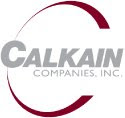
By: Andrew Fallon
Recent CRE Headlines – Which Ones Should We Believe?
FDIC Frets Over CRE Loan Losses
3 Signs of the Next Real Estate Collapse
Is a Market Bottom Imminent?
Plan Coming on Commercial Loans
Commercial Real Estate Debt Won’t be the Next Shoe to Drop
So the commercial real estate market will be the next economic catastrophe but the market bottom is near, investors have amassed substantial acquisition capital, and the FDIC is getting ready with a plan. Will CRE be the next shoe to drop? No one is certain how this will play out and varying sources have varying opinions, but something must budge when $1.4 trillion of commercial real estate debt matures over the next three years.
As reported, those likely to budge will be community banks, many of which hold portfolios containing a large percentage of commercial real estate and construction loans. NREI reports that nation-wide, community banks hold roughly 11% of total CRE industry assets. To this point, FDIC Chairman Shelia Bair is encouraging these banks to restructure existing and maturing loans in hopes of avoiding or minimizing larger losses. Unless value returns quickly, community banks might be the next shoe to drop. That will sting, but does it mean that the commercial real estate market is collapsing, and what will the overall impact be on Main Street and the financial system.
Fear and history has everyone thinking about the residential mortgage meltdown and the widespread financial impact, but commercial real estate is a different beast. First, the majority of loans causing concern are construction and development loans, not existing buildings. Secondly, even though CRE property values are down, the underlying assets are/or have potential to be income producing properties, which can be value-add opportunities to capable investors. Lastly, there is a market for distressed commercial real estate (as opposed to second homes). Investors have been amassing cash and REITs have been raising capital to acquire many of these troubled CRE assets. According to a NREI survey, 70% of investors are preparing capital to acquire real estate assets indicating that some investors see great opportunity in commercial real estate despite the doom and gloom reports. Who are you going to believe and what’s your appetite for risk?













